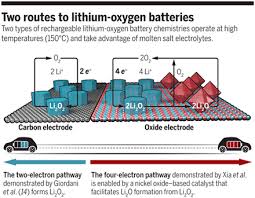
Breaking News
 Why Mamdani's socialist revolution in New York has sparked a civil war for Democrats...
Why Mamdani's socialist revolution in New York has sparked a civil war for Democrats...
 Tech tycoon whose parents fled communism offers six reasons NYC will become hellish dystopia...
Tech tycoon whose parents fled communism offers six reasons NYC will become hellish dystopia...
 NASA detects bizarre boost in interstellar visitor's speed as it moves toward Earth
NASA detects bizarre boost in interstellar visitor's speed as it moves toward Earth
 Britain "Doomed" Under Labour As Wealthy Scramble To "Get The Hell Out Of London
Britain "Doomed" Under Labour As Wealthy Scramble To "Get The Hell Out Of London
Top Tech News
 Japan just injected artificial blood into a human. No blood type needed. No refrigeration.
Japan just injected artificial blood into a human. No blood type needed. No refrigeration.
 The 6 Best LLM Tools To Run Models Locally
The 6 Best LLM Tools To Run Models Locally
 Testing My First Sodium-Ion Solar Battery
Testing My First Sodium-Ion Solar Battery
 A man once paralyzed from the waist down now stands on his own, not with machines or wires,...
A man once paralyzed from the waist down now stands on his own, not with machines or wires,...
 Review: Thumb-sized thermal camera turns your phone into a smart tool
Review: Thumb-sized thermal camera turns your phone into a smart tool
 Army To Bring Nuclear Microreactors To Its Bases By 2028
Army To Bring Nuclear Microreactors To Its Bases By 2028
 Nissan Says It's On Track For Solid-State Batteries That Double EV Range By 2028
Nissan Says It's On Track For Solid-State Batteries That Double EV Range By 2028
 Carbon based computers that run on iron
Carbon based computers that run on iron
 Russia flies strategic cruise missile propelled by a nuclear engine
Russia flies strategic cruise missile propelled by a nuclear engine
 100% Free AC & Heat from SOLAR! Airspool Mini Split AC from Santan Solar | Unboxing & Install
100% Free AC & Heat from SOLAR! Airspool Mini Split AC from Santan Solar | Unboxing & Install
Progress to lithium-oxygen batteries with up to four times the energy density of lithium-ion

The high theoretical-energy density of lithium-oxygen (Li-O2) batteries and their relatively light weight have made them the Holy Grail of rechargeable battery systems. But long-standing issues with the battery's chemistry and stability have kept them a purely academic curiosity.
Two of the more serious issues involve the intermediate of the cell chemistry (superoxide, LiO2) and the peroxide product (Li2O2) reacting with the porous carbon cathode, degrading the cell from within. In addition, the superoxide consumes the organic electrolyte in the process, which greatly limits the cycle life.



